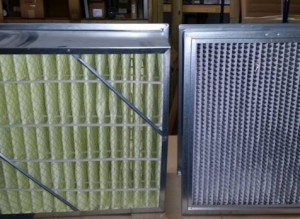 Air purification has been worked toward, to one degree or another, for over 200 years. The Industrial Revolution was a dramatic turning point in the history of mankind; unfortunately, it also introduced serious pollution to urban areas. Advancements in technology, as well as increasing awareness about the dangers of less obvious forms of pollution, eventually lead to the creation of modern air purifiers that so many homes and businesses rely on today.
Air purification has been worked toward, to one degree or another, for over 200 years. The Industrial Revolution was a dramatic turning point in the history of mankind; unfortunately, it also introduced serious pollution to urban areas. Advancements in technology, as well as increasing awareness about the dangers of less obvious forms of pollution, eventually lead to the creation of modern air purifiers that so many homes and businesses rely on today.
HEPA (High Efficiency Particular Air) filters were developed by the US Atomic Energy Commission to filter out highly hazardous aerosols, toxic carcinogens, radioactive particles and biohazardous contaminates. This new technology (originally classified as top-secret) was capable of pulling 99.97% of impurities from the air, down to as small as 0.3 microns.
In 1963, US Congress passed the Clean Air Act to set standards for the reduction of air pollution through fuel emissions standards. This alerted scientists and consumers of the need to protect our lungs from pollutants such as perfumes, building materials, chemicals, pesticides, and allergens.
As more consumers became concerned about air pollution, HEPA air filters became popular in the 1970’s and 1980’s (and they were no longer classified as top-secret). However, at the time, they were bulky and difficult to operate. Today, air purifiers and sterile air filters are used in a variety of critical filtration applications in nuclear, electronic, aerospace, pharmaceutical and medical fields, as well as in homes around the world.










